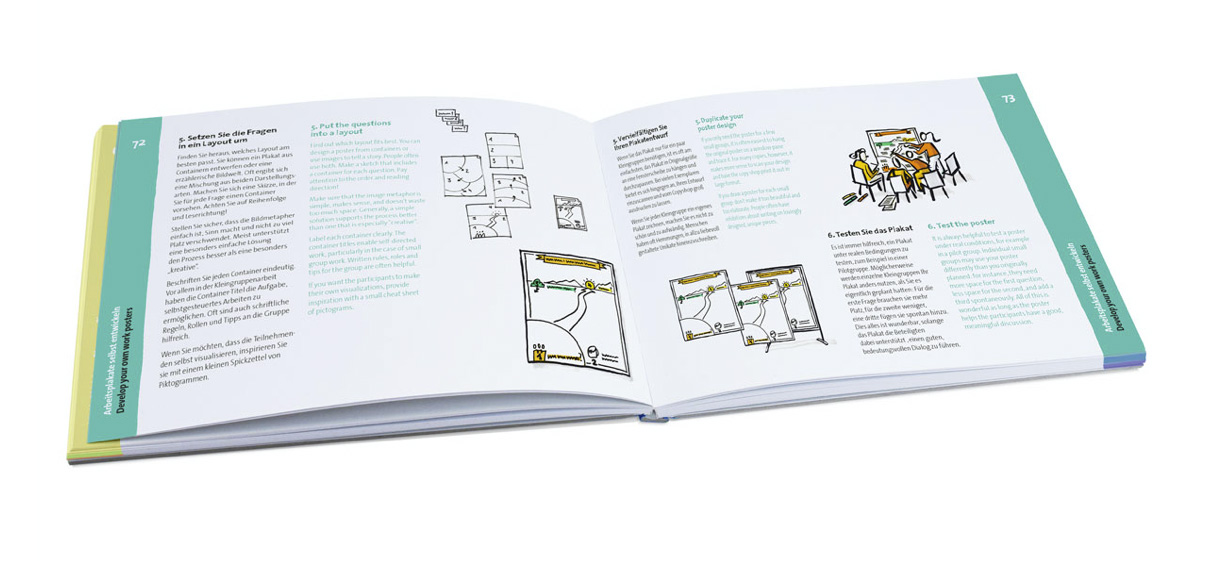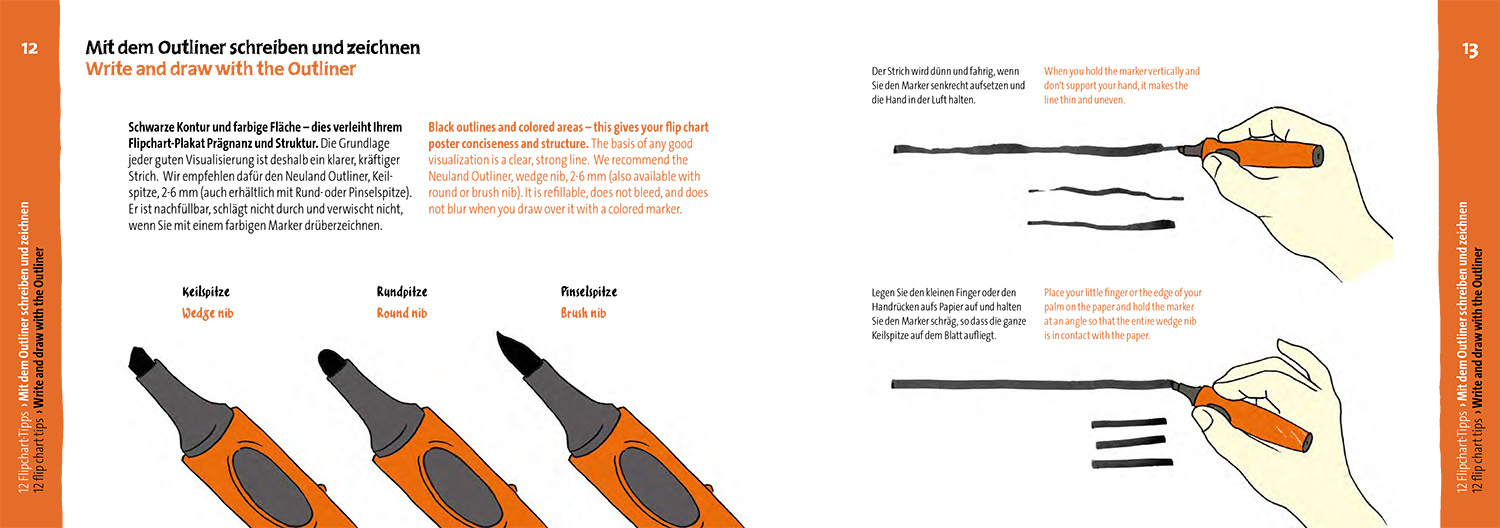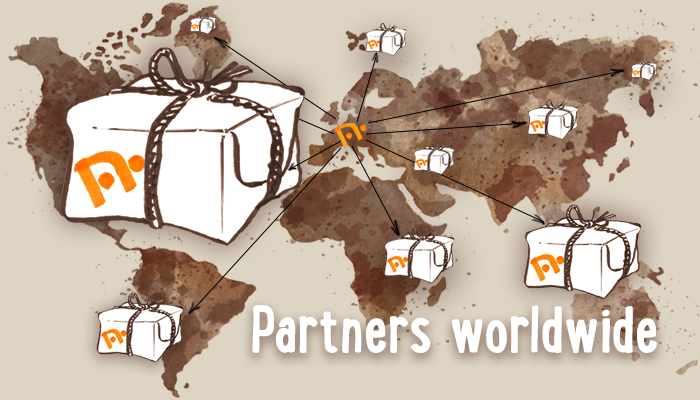Most of you have already heard about Martin Haussmann. In case you haven’t, we’ll explain why he’s THE expert when it comes to bikablo® posters. 😉
Martin was one of the first European experts in our field. He’s not just the author of UZMO – Thinking With Your Pen but also founder of bikablo®. And so the circle is complete. It’s not a surprise that he worked on the new visual dictionary, too, and knows it by heart. Conny Schwegler (Neuland Switzerland) interviewed him just before the product launch.
By the way: If you’d like to get to know bikablo, we recommend their new free online series “bikablo meetup“, which is available in German and English. The next English event – Iconize it! Turning ideas and concepts into visuals – takes place on March 11. And when it comes to poster design, there’s another new online course worth mentioning: 99 Minutes Visual Skills takes place in English at 4 pm.

Martin, the visual dictionary “bikablo posters” will soon be launched. After bikablo 1, bikablo 2.0 and bikablo emotions this will be the fourth book of this series in cooperation with Neuland that’s been extremely successful for years. What’s so special about this new book?
Well, Conny, the first thing that comes to my mind is the story on how it was developed. We asked bikablo coaches and visual practitioners in Germany, Austria and Switzerland, the global trainer team and thousands of alumni to work together with us. Our aim is to help people creating all kinds of different charts. This is why we asked the bikablo Community: “What are your favorite chart templates? In which context do you use them? Which methods do you use?” The messages we received were one of the sources we’ve used to create bikablo® posters. So, this is another visual dictionary from visual practitioners for visual practitioners.
This is what you can expect from the new bikablo® posters!
„We“ means: There were many people working on both concept and design (process)?
You’ve known us for years and know that we’re a community of like-minded people that have completely different skills. In this project Stefan Böker, an illustrator from our core team of trainers, worked together with Julie Junginger, a graphic designer from the bikablo office. And of course my Managing Partner Karina Antons and the team from the office in Cologne helped in word and deed, too.
Tell us something about why you chose to create a visual dictionary for flipchart design!
We offer trainings and products people actually need. And in this case the idea once again came from our community. “Even with the pictograms and shapes from the bikablo books I find it hard to draw a strong flipchart!” This is something we hear a lot. Or : “My Graphic Recordings look so messy and unorganized. How can I change that?” Of course, the easiest way is to participate in one of our basic trainings or advanced trainings we offer together with Neuland Switzerland*. But this is not an option for everyone. This is why we decided to have a book that combines expert tips on flipchart design and a broad range of beautiful templates.
*Editor’s note: Bikablo also holds trainings at Neuland headquarters in Germany on a regular basis. Too far away? Find out more about bikablo’s global training program.
Helpful tips for rookies and advanced practitioners: You should know the basics.
Would you take us on a short journey through the new “bikablo posters”?
- Chapter 1 includes the 12 most important tips on flipchart design. This starts with basics such as “how to draw a clean line”, a short handwriting training, and a brief explanation on different color techniques. This is a little visualization 101 on 24 pages.
- The next chapter shows you flipchart classics of a typical meeting or training, including welcome charts and evaluation charts. These templates are easy to draw, even for beginners.
- Chapter 3 offers the 10 best bikablo® posters (mountain, balloon, iceberg, etc.) and specific examples of use.
- Next up: my favorite chapter “method templates”, which also includes some features of our bestseller “UZMO – Thinking With Your Pen” that will help the reader create their own charts.
- Last but not least, a real highlight: 10 completely new pictorial landscapes. Our creative genius Stefan created poster designs for Visual Storyelling and Graphic Recording by combining popular pictorial metaphors with uncommon metaphors. Have you ever created a strategy poster that takes place at the North Pole? Or a feedback poster outer space?
Out of this world: The pictorial landscapes include extraordinary templates.
Wow, sounds amazing, Martin. Tell me: Why is the chapter on “method templates” your favorite?
For me, this was the most complex chapter of the book – and the reason why we had to postpone the launch again and again. The basic idea originated from our training “Visual Meeting Facilitation”: How can I draw a concept on a flipchart that allows me to change perspectives and move in a new direction during a workshop or meeting? And how do I make sure this chart leaves room for participants to contribute? This is an interesting approach. For this chapter we collected ideas and experiences from our team of visual facilitators and our community. But we also used our learnings from classics like the Kanban board or Business Model Generation Canvas.
Would you give us an example for this?
I’m sure you know the “core team” around Schulz von Thun. I can verbally convey an idea but it’s much more meaningful when I draw somthing on a flipchart while explaining in order to ask the coachee: “Which situations challenge you? Which team members do you then think about? And how do you want to deal with it?” People like to take home a poster that is developed during a meaningful conversation like this, as an “anchor of change” if you will. Of course, you can bring a template to a coaching, meeting or group conference. You can also use the book to practice in order to spontaneously draw something on a flipchart. This is why we kept it simple and explain everything step-by-step and in small sketches.
Martin’s favorite chapter: “method templates”
I can’t wait to get a copy! I’ve got one last question: Is this only for people working at a flipchart or pinboard?
Good question, Conny! When we first drafted the book, this was our focus indeed, as bikablo “used to be” a very analog company. However, COVID-19 and the rules of social distancing lead to a greater demand in online trainings. We, therefore, designed many templates in a way that makes it easy to draw them on a tablet, too. You can then use them online, for instance as background for a collaboration tool like Mural or Miro. We and many colleagues already do that.








